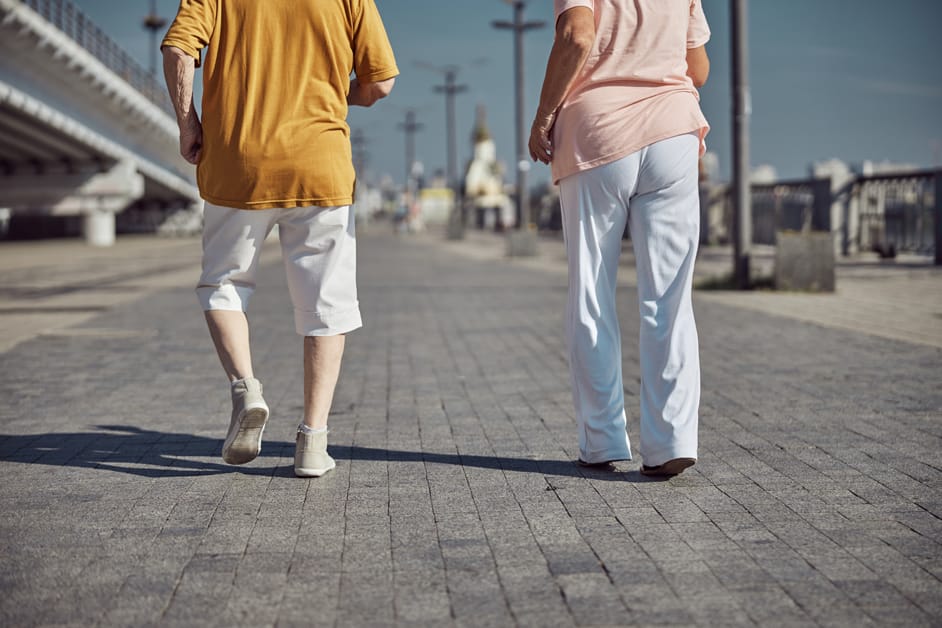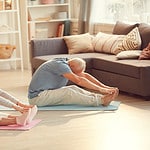Not Understanding the Cause of Pain
When it comes to knee pain, understanding the cause is key. If the wrong approach is taken, it may only provide temporary relief, or worse, make the pain worse. Get to the root of the problem and create a plan to treat it correctly. This is essential in order to gain long-term relief.
Identifying the source of the pain
To find the source of your knee pain, it’s vital to have a healthcare professional assess your range of motion and gait. Don’t guess the cause, as this will not be effective. Commonly, knee pain is caused by activities like walking up stairs or around the block. This is due to bad posture or lack of warm-up.
Baker’s cyst and tendinitis can also cause sudden, deep pains.
If left untreated, overuse injuries can become chronic and hard to cure. Resting can reduce inflammation and lessen pain but this can be difficult with a busy lifestyle. Professional help should be sought where possible to pinpoint the source of the discomfort. Then, tailored treatments plans can be created, such as:
- Stretching or strengthening exercises
- Proper rest times
Consulting a doctor or physical therapist
If your knee pain’s bothering you, talking to a doctor or physical therapist is a great start. Overuse knee pain can be caused by many things – like nerve, joint, or muscle strain; joint swelling; or arthritis. A doctor or physical therapist can help you figure out what’s causing the pain, so it can be treated properly and not become long-term.
To treat overuse knee pain correctly, first you need to know what it is. Your doctor might use X-rays or MRI scans to get a better look at your joints. Knowing what it is will help you choose the right treatment. Physical therapists have special tools like low-level laser therapy, kinesio taping, joint mobilization, and massage therapy. Orthopedic surgeons may suggest surgery if you need more help.
Whether you’re just starting treatment or already have chronic pain, talking to both healthcare professionals and rehabilitation specialists can help you get relief from overuse knee pain.
Not Taking Proper Care of the Knee
People may think the knee is tough, but it’s not. Taking care of it is essential to avoid overuse pain. Ignoring it could lead to long-term troubles that could limit movement.
To stay healthy and pain-free, it is important to know what kind of care to take:
Resting the knee and avoiding activities that cause pain
Rest your knee and stay away from activities that give you pain. Refrain from weight-bearing activities such as running or jump rope. You can do some light exercise like walking or swimming, but with supervision.
Don’t rest too much – this can weaken muscles and cause stiffness in tendons. But don’t rest too little – this can worsen symptoms or hurt joint structures. Take a break for one week and ease back into activity with your doctor’s help.
For overuse knee pain, also avoid activities that give you pain or have an increased risk of injury. Examples include squats, leg presses, and other repetitive exercises that put stress on the knee. Consult a physical therapist who will guide you through the process and make sure your mechanics are right before you engage in sports.
Applying ice or heat to reduce inflammation
Many assume ice or heat can reduce inflammation to treat overuse knee pain. It can offer short-term relief – but it should be used carefully. Ice is best for acute injuries, such as strains or sprains. It constricts the blood vessels, reducing swelling and pain. Heat shouldn’t be used if there’s swelling or pain. It increases blood flow and worsens inflammation.
For best results, try a combination of both. Before applying either of these treatments to your knee, consult with a doctor or physical therapist.
Taking over-the-counter medications for pain relief
Be mindful of OTC meds like ibuprofen or aspirin. They offer short-term relief, but if pain persists for many days, see a doctor. Long-term use of these analgesics may cause adverse effects like gastrointestinal damage, and even liver/kidney issues. Plus, they can interact with other meds you take. So, it’s best to check with your physician before taking OTC meds for knee pain.
Not Doing the Right Exercises
Making the wrong exercises can cause overuse knee pain, particularly for those who exercise a lot. Choosing the correct exercises is essential to make sure you don’t worsen your condition. Here, we’ll go over some of the common errors to avoid when dealing with overuse knee pain:
- Avoiding exercises that put too much stress on the knee.
- Doing exercises that are too strenuous for your current level of fitness.
- Performing exercises without proper form and technique.
- Not allowing enough time for rest and recovery between workouts.
- Not stretching before and after exercising.
Doing exercises that strengthen the muscles around the knee
When dealing with overuse knee pain, it can be tempting to focus on exercises for the knee. However, the problem could be with the surrounding muscles. So, to reduce the pain, exercises to build strength in those muscles are important.
Good form and alignment are essential while doing the exercises. Squats, lunges, and step-ups can be effective. Also, stretches should be done for increased flexibility of the muscles and ligaments around the knee joint.
Other strengthening exercises include hip extensions, abdominal contractions, and single-leg bodyweight lifts. These should be done slowly for full range of motion and contraction. If challenging exercises are needed, free weights or bands can be added for greater resistance. Lastly, ensure that the weight or exercise does not cause any increase in discomfort. Be sure to have mastered technique with less challenging equipment and movements before increasing intensity!
Avoiding exercises that put too much strain on the knee
When you have overuse knee pain, exercising may help. But, not all exercises are good and some can even make it worse! Knowing which exercises to avoid is important for knee health and avoiding injury.
When doing any physical activity, it’s essential to pay attention to form and technique. If a movement or position causes your knees to move into an unnatural position, change it or don’t do it. This is to stop added pressure on the joint, which can cause further injury.
Also, avoid:
- Running
- Jump squats
- Hack squats
- Powerlifting squats
- Plyometric activities (like lunges)
- Jerking motions (like a straight leg deadlift)
- High-impact sports (tennis, rowing, skiing, football)
- Any other quick movements that create torque in the joint
Limiting time sitting can also help as it can lead to muscle imbalances around the joint, which can increase re-injury chances.
These tips can help you stay safe while exercising, allowing you to manage your overuse knee pain and reduce stress on your joints.
Not Wearing the Right Shoes
It’s essential to select shoes that give ample support, cushioning, and steadiness when dealing with overuse knee pain. Wearing improper shoes can cause instability, pronation, and overpronation. Plus, it may increase the risk of slipping and falling.
To prevent these mistakes, here’s what you should look for in the right shoes:
Wearing shoes with adequate arch support
When it comes to knee pain, the right shoes matter. Make sure they are well-constructed and have arch support. Shoes without it can cause knee pain, flat feet and more.
Shoes with bad arch support don’t cushion or stabilize your feet. This can lead to overuse knee pain. Look for shoes with a cushioned heel. This helps absorb shock better.
Ideal footwear for knee pain should also promote good posture when walking, running or being active. Shoes should also keep your foot secure on different surfaces and during activities. Consider insoles for more support and comfort during physical activity.
Avoiding shoes with a lot of cushioning
Proper footwear is necessary to reduce overuse injuries and protect your knees. Shoes with too much cushioning can cause problems like decreasing proprioception. This disrupts balance and leads to incorrect movement patterns, making you more vulnerable to injury.
The best shoes for knee protection should offer stability and cushioning. Look for lightweight and durable materials like leather or air mesh uppers. Also, a combination of foam and plastic shanks along the sole and a supportive midsole are great. Non-slip outsoles with good traction are important too. And an adjustable lacing system helps guard against movement within the shoe or slipping during physical activity.
Getting the right fit is essential for dealing with knee pain due to overuse injuries. Comfort and support in terms of size and width are important. The foot needs room to move naturally, without bunching fabric around joints or causing toes to rub up against the end of the shoe. The width should be adjustable in some areas and snug in others where extra pressure is needed for stability. Remember, materials will break down faster if the fit is incorrect. So make sure you get it just right!
Not Making Lifestyle Changes
People often make the mistake of not adapting their lifestyle when dealing with too much knee pain. Not changing your daily activities can cause the pain to worsen. Most people do not consider how their knee can be affected. Making lifestyle changes is important for reducing knee pain. Let’s see what changes to make!
Reducing excess weight
If you have overuse knee pain, losing weight is a good way to fix it. But it can be difficult! To help, here are some common mistakes to avoid:
- Making massive changes straight away. Start small and build up. Don’t try to change everything at once or you’ll fail.
- Not doing anything. If you don’t make healthier meals, get physical activity and watch portion sizes, you won’t see any improvement.
- Pushing yourself too hard. Take rest days if you need them.
- Just cutting calories. Eating healthy food is just as important.
- Letting others control you. Stay focused on your goal, no matter what they do.
Eating a healthy diet
Physical therapy is often a great way to reduce symptoms of overuse injuries and avoid recurrence. However, lifestyle changes are also important. A healthy diet is key.
Eating a balanced diet of leafy greens, proteins, and vitamins can reduce pain and inflammation, aiding in healing. Stay away from processed foods and refined sugars. Instead, choose minimally processed foods like fresh fruits and vegetables, whole grains, healthy fats, lean proteins, low-fat dairy, seeds, and nuts.
The amount of fat matters for knee health, too. Too much fat (like found in fast food) increases the risk of osteoarthritis and other joint issues due to inflammation. On the other hand, good fats like those found in avocado or salmon help reduce inflammation. Be sure to drink enough water throughout the day to stay hydrated, but not overly thirsty.
If you eat an anti-inflammatory diet and get regular physical activity, you may be able to speed up your recovery from a knee injury!
Getting enough sleep
Sleep is essential for many reasons, especially for knee pain relief. It helps your body heal and get stronger. Plus, it reduces inflammation in the knee.
7-9 hours of sleep is suggested each night. But some need more or less. Make a bedtime routine by going to sleep at the same time each night and avoid electronics before bed.
During the day, take breaks and relax. Do yoga, meditate, or unplug from electronics. Or just do something you love. Small changes like these can help with overuse knee pain.
Frequently Asked Questions
Q1: What Are Some Common Mistakes to Avoid When Dealing with Overuse Knee Pain?
A1: Some common mistakes to avoid when dealing with overuse knee pain include: continuing to push through the pain, not warming up/cooling down before and after exercise, not using proper form when exercising, and not consulting a doctor for diagnosis and treatment.
Q2: What Other Factors Can Contribute to Overuse Knee Pain?
A2: Other factors that can contribute to overuse knee pain include: age, weight, weak muscles, inflexible tendons and ligaments, and excessive joint stress.
Q3: Are There Any Home Remedies for Overuse Knee Pain?
A3: Yes, there are home remedies for overuse knee pain. These include: resting the knee, applying a cold compress, taking anti-inflammatory medication, and doing stretching and strengthening exercises.





